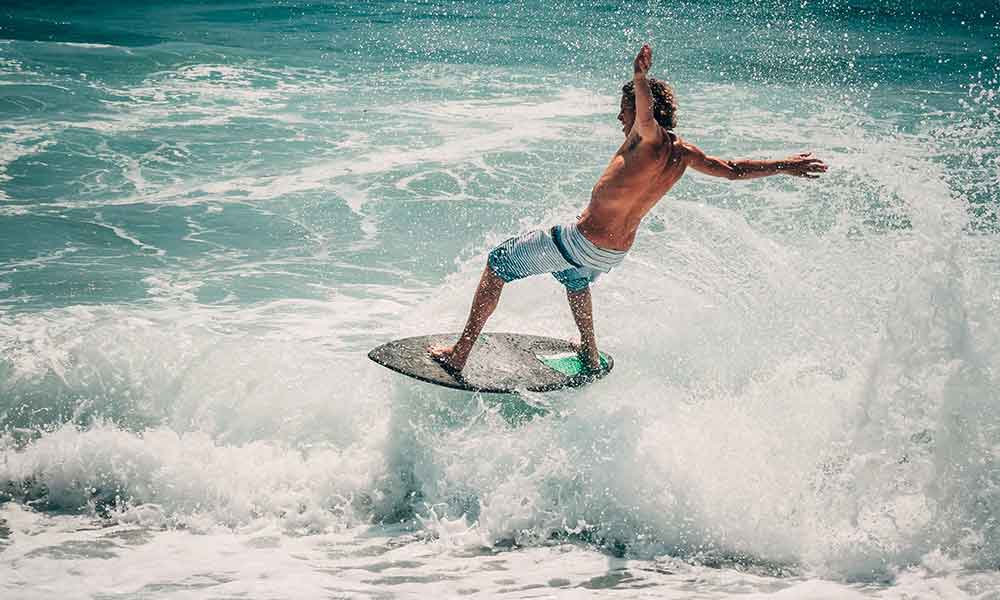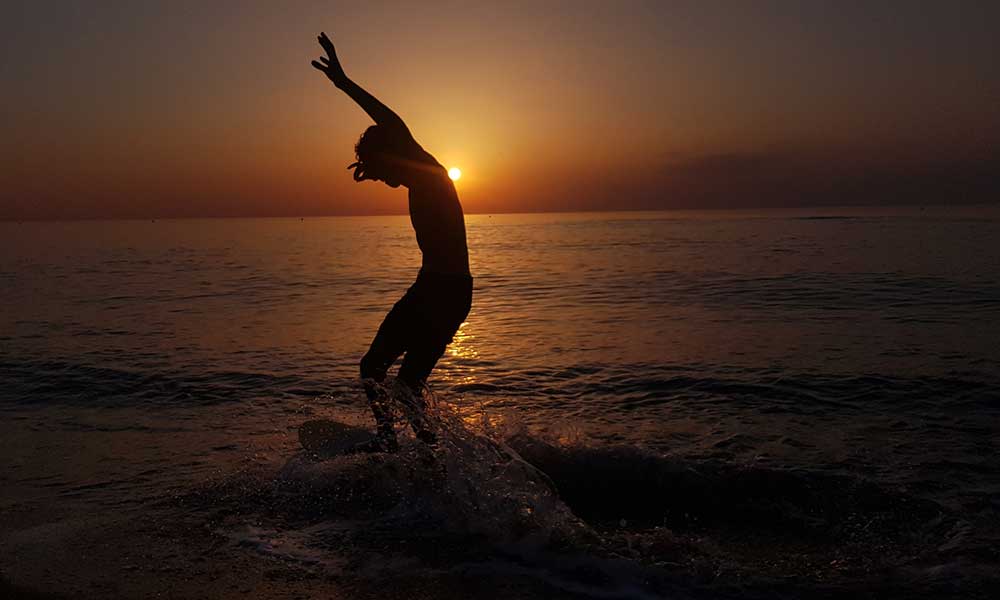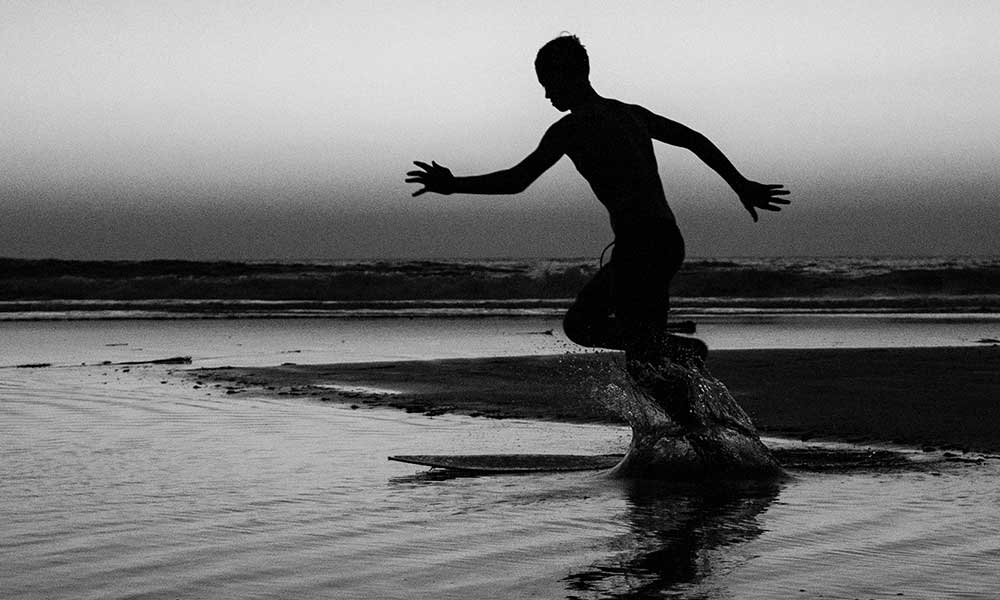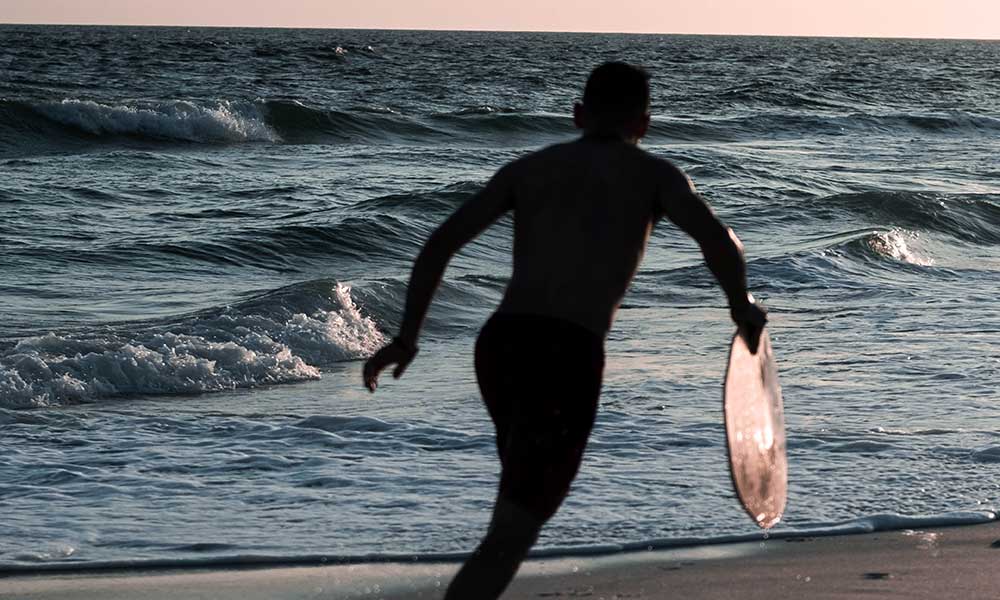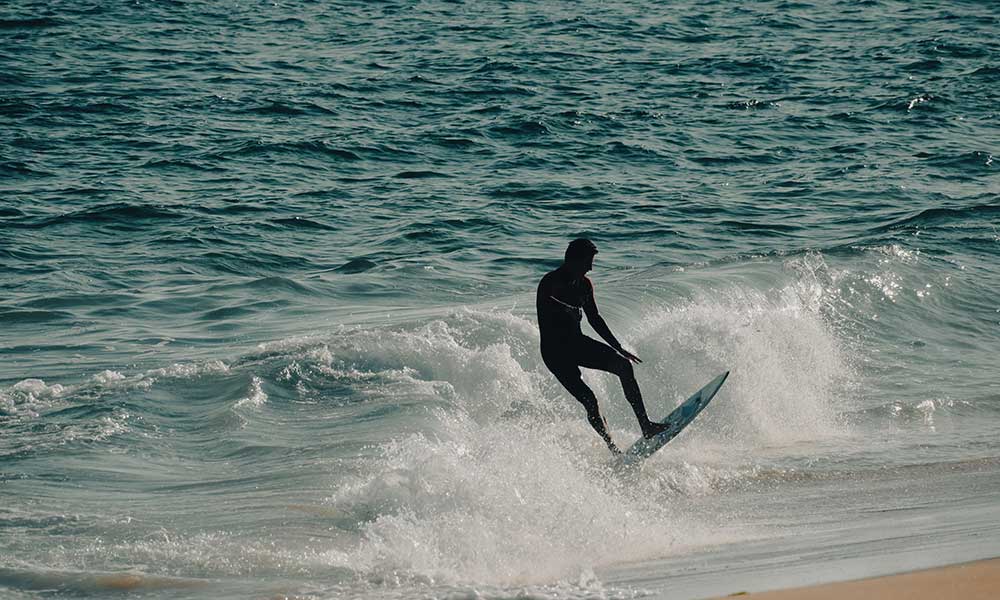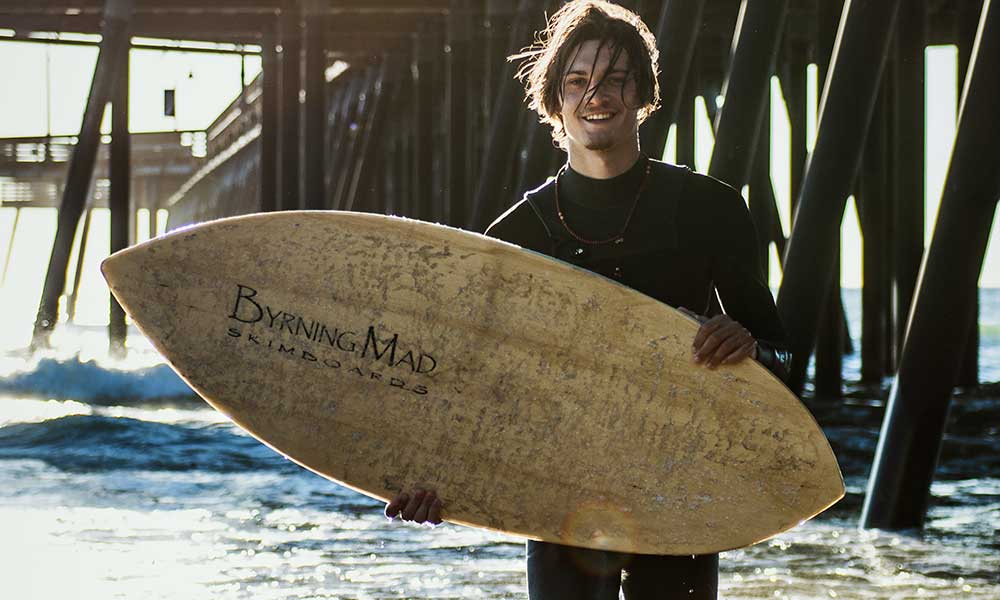Skimboarding is becoming increasingly popular and as more riders take to the sport, the rate of injury increases. But how dangerous is skimboard, how do skimboarding injuries occur, and what can you do to prevent them?
Is Skimboarding Dangerous?
All board sports come with an element of risk and skimboarding is no exception. It’s not as popular as sports like surfing, skateboarding, and even bodyboarding, and so the data pool isn’t as substantial. However, it has been around for a number of years and we can make some conclusions regarding its safety in comparison to other board sports.
Why Skimboarding Is More Dangerous Than Other Board Sports
The learning curve for skimboarding is much steeper than it is for other sports. As a result, beginners make more mistakes, fall more often, and suffer from a range of injuries. Many of these are minor soft tissue injuries, but sprains and breaks are not uncommon.
Skimboarding is also seen as an easy and cheap water board sport, which means beginners are often inadequately prepared. They don’t have the equipment needed to protect themselves or the knowledge to know how to fall, causing wrist fractures and other common board sport injuries.
Why Skimboarding is Safer Than Other Board Sports
On the whole, skimboarding is safer than other board sports because it’s performed closer to the shore.
Skimboarders literally “skim” over shallow water. They don’t exactly have a soft fall awaiting them following a mistake, but it’s preferable to falling off a skateboard and hitting the asphalt or half-pipe. There is also minimal drowning risk and little chance of being held under the waves or attacked by sharks.
If we’re comparing it to skiing and surfing, skimboarders have a harder fall and may suffer from skin and bone injuries, but there’s no risk of hurtling into a tree or triggering an avalanche.
What are the Most Common Skimboarding Injuries?
Soft tissue injuries aside, the most common skimboarding injuries are broken bones, including wrist fractures, fractured ankles, and broken arms/legs. Knee injuries are also fairly common, as are torn ligaments and pulled muscles.
A study conducted on skimboarding injuries in the United Kingdom found that the most common injury was a lower-body fracture, often of the distal tibia, mid-foot, or ankle. Most of these injuries were serious enough to require surgical intervention.
The study noted that while sports like skateboarding and rollerblading often lead to wrist injuries, skimboarders are more likely to damage lower limbs.
It also recorded an average age of just 18.7, with some patients as young as 12, suggesting that it’s popular with kids as well as young adults.
Eye and ear problems are not unheard of (mainly bacterial issues from the water) and in extreme cases, serious spinal cord injuries can occur.
A study published in 2009 reported on three serious skimboard injuries referred to a spinal cord injury rehabilitation facility in Atlanta, Georgia (admitted from Florida hospitals).
All three patients were males aged between 17 and 23 and they had all suffered from cervical spine fractures as a result of skimboarding accidents.
The patients had been flung from their skimboards in shallow water and all suffered from tetraplegia, which is the inability to move the upper and lower body.
The study concludes with the following ominous note, “Spinal cord injury should be considered an additional risk associated with skimboarding, particularly as the sport has grown in popularity and become more ‘extreme’ in the maneuvers performed.”
Of course, that doesn’t mean you’re going to suffer a spinal injury or a broken bone the moment that you hit the waves. Serious injuries are rare, but it’s worth remembering that this sport can be dangerous and should not be taken lightly.
How to Skimboard Safely
Although the dangers are not as great as many other sports, the prevalence of skimboarding sprains and fractures, as well as the risk of spinal cord injuries, means it’s important to be well prepared before riding those shallow waters.
One of the first things you should do is check that there are no rocks nearby. Look underwater and don’t ride too close to rocks or other hazards. Even if you think you’ll be able to avoid them, it just takes one mistake and you’ll be careering straight into them.
It’s important to stay in shape, as well. The fitter and stronger you are, the less likely you are to suffer from heavy fractures when you slip and fall or are thrown from your skimboard.
Build a strong core, increase your fitness levels, and keep your wits about you. Take a friend with you and carry a first aid kit along. If anything serious happens, they’ll be the ones to call for help or patch you up.
Finally, make sure you know what you’re doing, get some tips if you’re new, and look for the most suitable beaches in your area.
Is Skimboarding Safe for Kids?
If you follow the safety steps above, choose the right board, and monitor them at all times, skimboarding can be safe for kids. They will fall, they will suffer from a few bumps and bruises, but it’s nothing that they won’t deal with on the playground or at football practice, and they’ll be ready to jump right back on the board and tackle the next section.
Some parents use skimboarding as a first step toward a surfboard, giving youngsters a chance to sample wave riding without venturing far from the shore.
Is Skimboarding Safer Than Surfing?
You might suffer more bruises and fractures on a skimboard than you do on a surfboard, but it’s still the safer sport overall.
A skimboarding accident is often painful but rarely life-threatening or life-changing.
A surfing accident, on the other hand, can render the rider unconscious far from the shore. It can hold them under a wave or send them smashing into a rocky bottom. When those big waves hit, even professional surfers are at risk, and that’s before we factor shark attacks into the equation.
Of course, such risks are minimal. Shark attacks usually claim just one life every couple of years in the US and drowning deaths are rare. But with skimboarding, they’re basically non-existent.

